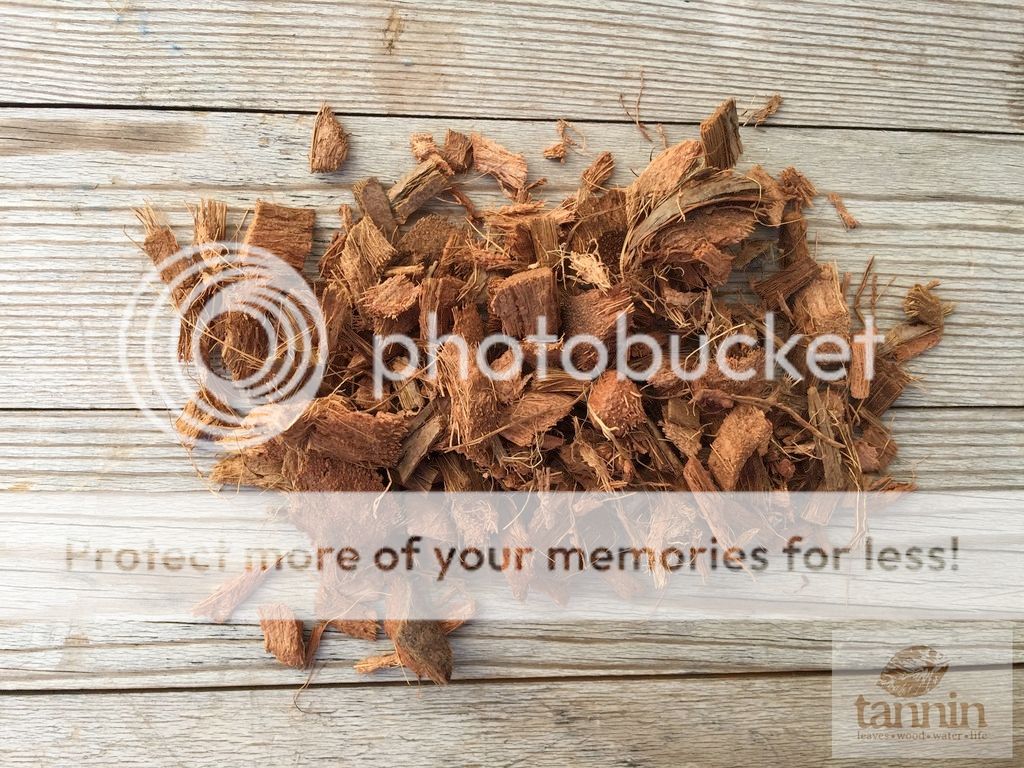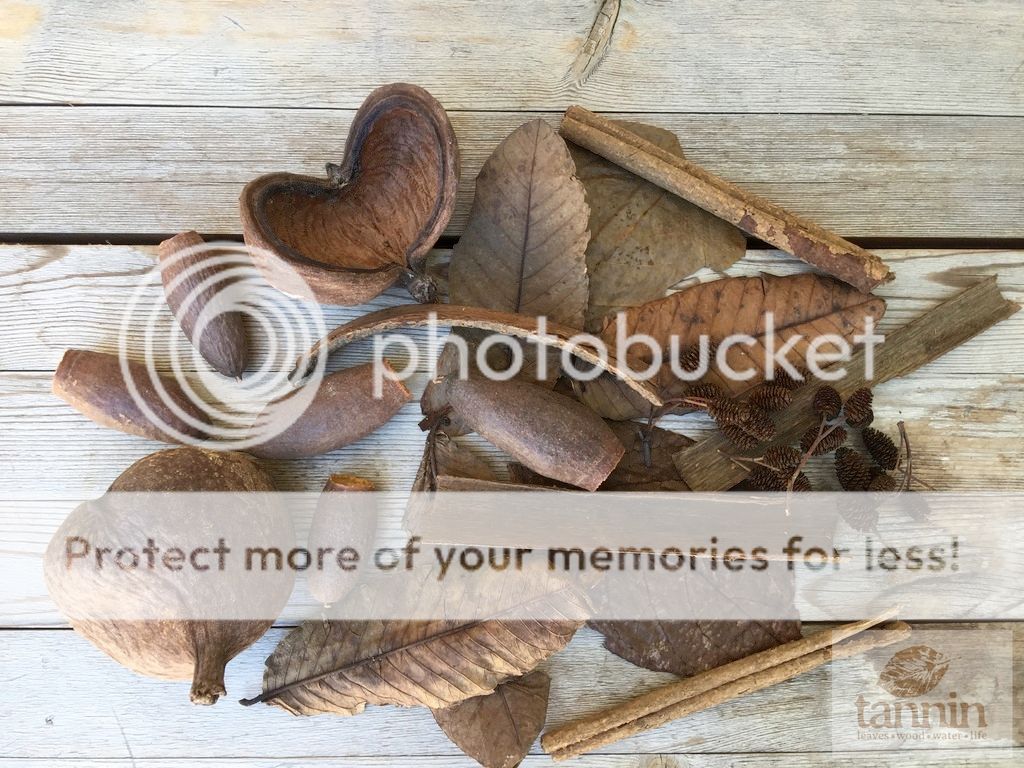Tannin Aquatics
CCA Members
If you're a geeky hobbyist like me, you're always thinking of different ways to do stuff we seem to take for granted, or have down a certain way for years.
One great example of this is the substrate materials that we use in our aquariums. Traditionally, we've used stuff like gravels, sand, clay materials, etc. These all work quite well, and there are substrates for virtually every application. Many look pretty cool, and are both functional (as in the plant "soils") and practical (like the many different sizes of sand/gravels offered for aquarium use).
I'm really into substrates. Specifically, creating substrates that are a reasonable representation of the bottom of streams, tributaries, and garages, as found in the Amazon basin. Each one of these has some unique characteristics, and each one presents an interesting creative challenge for the intrepid hobbyist. Until quite recently, the most common materials we had to work with when attempting to replicate these substrates were sand, natural and colored gravels, and clay-comprised planted aquarium substrates.
If I have something to say about the matter, you'll soon be incorporating a wide variety of other materials into your biotope aquarium substrate!
If you've seen pictures and videos taken underwater in tropical streams (again, I'm pulling heavily from the Amazonian region), you'll note that there is a lot of loose, soil-like material over a harder mud/sand substrate. Obviously, using an entirely mud-based substrate in an aquarium, although technically possible- will result in a yucky mess whenever you disturb the material during routine maintenance and other tasks. You can, however, mix in some other materials with the more commonly found sand.
So, exactly what materials am I referring to here?
Well, you could start with a thin layer of aquarium-grade sand, and build from there. We will soon be offering a really cool coconut-based substrate supplement material (called "Fundo Tropical") that looks and behaves very similar to the material that you see on the upper layers of the bottom of many streams and other aquatic environments. You'd mix a very thin (like 1/2"-3/4") layer of this material into the uppermost layer of your sand or gravel. It has a great color and texture, with interesting fiberous structure. It has the added advantage of staying "down" nicely once you prepare it for use (boiling is the preferred method). It also lasts a very long time, becoming essentially inert after it releases it's initial tannins into the water column. The intricate matrix it forms will become a very useful foraging area for many fishes, hosting small benthic life forms, just like natural stream bottoms do.

The next step in building a realistic bottom would be to add some harder, heavier leaf-like materials. For this, we suggest aquatic botanicals like our "Frita Pods", "Encontro Pods", "Terra Sorrindo", "Mariposa Pods", Banana Stem Pieces, Coco Curls, "Teardrop Pods", "Tapete Pods", and "Helix Pods." All of these materials will last an extremely long time, and help serve as a "top boundary layer" for the "Fundo Tropico" material. In addition, you could add some of the more "permanent" types of pods, such as "Heart Pods", "Estalo Pods" and others to add some interest, texture, and height.


(Pic by the Late, great Takashi Amano)
Finally, you'd add some leaves, such as Catappa, Guava, and Loquat. Catappa are probably the most "expendable" leaves, as they tend to decompose relatively quickly, followed by Guava leaves, and finally, Loquat. Mixing several varieties will create a diverse assemblage of natural materials that will break down, much as they do in nature, providing tannins, organics acids, and of course, imparting a brownish tint to the water that we find really attractive!
"Wait a minute, Scott. Your proposing that I add a whole lot of stuff that may trap detritus, uneaten food, solid fish waste, etc.- and some of it will break down in the process! Sounds like a recipe for a lot of debris in the system!"
(Oh, say it- you wanted to tell me it's a maintenance liability and sort of a mess if you're not meticulous and diligent in maintaining it).
Well, yeah. This kind of combination of natural materials can create a potentially messy substrate area if you are not a careful feeder and tend to let things go. So, being the diligent aquarist that you are- just be conscientious about maintenance!
This is one of the challenges in creating a truly realistic biopic simulation in your aquarium. It's absolutely not impossible to do this..It just requires some discipline, care, and prudent maintenance to make sure that you don't create an aerobic swamp in your system!
It's important to have adequate water movement, creation, and overall good husbandry when attempting such a substrate.
The rewards are a)the most realistic-looking stream bottom you've ever seen in an aquarium, b)water conditions similar to those found in many natural aquatic environments, and c)more natural behaviors- including feeding, foraging, and yes- breeding- of your fishes accustomed to this type of environment in nature.
Seems worth exploring further, doesn't it?
One great example of this is the substrate materials that we use in our aquariums. Traditionally, we've used stuff like gravels, sand, clay materials, etc. These all work quite well, and there are substrates for virtually every application. Many look pretty cool, and are both functional (as in the plant "soils") and practical (like the many different sizes of sand/gravels offered for aquarium use).
I'm really into substrates. Specifically, creating substrates that are a reasonable representation of the bottom of streams, tributaries, and garages, as found in the Amazon basin. Each one of these has some unique characteristics, and each one presents an interesting creative challenge for the intrepid hobbyist. Until quite recently, the most common materials we had to work with when attempting to replicate these substrates were sand, natural and colored gravels, and clay-comprised planted aquarium substrates.
If I have something to say about the matter, you'll soon be incorporating a wide variety of other materials into your biotope aquarium substrate!
If you've seen pictures and videos taken underwater in tropical streams (again, I'm pulling heavily from the Amazonian region), you'll note that there is a lot of loose, soil-like material over a harder mud/sand substrate. Obviously, using an entirely mud-based substrate in an aquarium, although technically possible- will result in a yucky mess whenever you disturb the material during routine maintenance and other tasks. You can, however, mix in some other materials with the more commonly found sand.
So, exactly what materials am I referring to here?
Well, you could start with a thin layer of aquarium-grade sand, and build from there. We will soon be offering a really cool coconut-based substrate supplement material (called "Fundo Tropical") that looks and behaves very similar to the material that you see on the upper layers of the bottom of many streams and other aquatic environments. You'd mix a very thin (like 1/2"-3/4") layer of this material into the uppermost layer of your sand or gravel. It has a great color and texture, with interesting fiberous structure. It has the added advantage of staying "down" nicely once you prepare it for use (boiling is the preferred method). It also lasts a very long time, becoming essentially inert after it releases it's initial tannins into the water column. The intricate matrix it forms will become a very useful foraging area for many fishes, hosting small benthic life forms, just like natural stream bottoms do.

The next step in building a realistic bottom would be to add some harder, heavier leaf-like materials. For this, we suggest aquatic botanicals like our "Frita Pods", "Encontro Pods", "Terra Sorrindo", "Mariposa Pods", Banana Stem Pieces, Coco Curls, "Teardrop Pods", "Tapete Pods", and "Helix Pods." All of these materials will last an extremely long time, and help serve as a "top boundary layer" for the "Fundo Tropico" material. In addition, you could add some of the more "permanent" types of pods, such as "Heart Pods", "Estalo Pods" and others to add some interest, texture, and height.


(Pic by the Late, great Takashi Amano)
Finally, you'd add some leaves, such as Catappa, Guava, and Loquat. Catappa are probably the most "expendable" leaves, as they tend to decompose relatively quickly, followed by Guava leaves, and finally, Loquat. Mixing several varieties will create a diverse assemblage of natural materials that will break down, much as they do in nature, providing tannins, organics acids, and of course, imparting a brownish tint to the water that we find really attractive!
"Wait a minute, Scott. Your proposing that I add a whole lot of stuff that may trap detritus, uneaten food, solid fish waste, etc.- and some of it will break down in the process! Sounds like a recipe for a lot of debris in the system!"
(Oh, say it- you wanted to tell me it's a maintenance liability and sort of a mess if you're not meticulous and diligent in maintaining it).
Well, yeah. This kind of combination of natural materials can create a potentially messy substrate area if you are not a careful feeder and tend to let things go. So, being the diligent aquarist that you are- just be conscientious about maintenance!
This is one of the challenges in creating a truly realistic biopic simulation in your aquarium. It's absolutely not impossible to do this..It just requires some discipline, care, and prudent maintenance to make sure that you don't create an aerobic swamp in your system!
It's important to have adequate water movement, creation, and overall good husbandry when attempting such a substrate.
The rewards are a)the most realistic-looking stream bottom you've ever seen in an aquarium, b)water conditions similar to those found in many natural aquatic environments, and c)more natural behaviors- including feeding, foraging, and yes- breeding- of your fishes accustomed to this type of environment in nature.
Seems worth exploring further, doesn't it?


